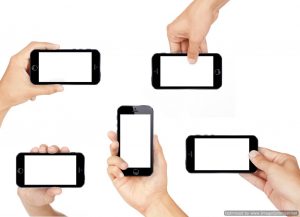With the mobile advertising industry becoming so large it is on surprise that some advertisers have been complaining about the number of false clicks on their ads. While ad fraud is a problem, another significant issue is the number of accidental clicks. Due to the size of screens and other factors, millions of people are accidently tapping on an ad that they have no interest in. They then quickly close out the ad and continue on with what they were doing.
In addition to being a small inconvenience for the user, the brands that are paying for these ads are losing a significant amount of money. To help combat this issue, Google has just announced several important changes.
Borders of Ads Don’t Count
The first change being implemented by Google is that any taps that are made on the very edges of an ad will not be considered taps. They have found that this area is very prone to the accidental taps, and also that very few people intentionally tap in this part of the ad. So, when implemented you may start to notice that touching the outer edges of an ad on your mobile device will no longer trigger the ad to load.
Clicking Near Close Button
With in-app install advertisements a lot of accidental taps were happening when people attempted to click the small x to close the ad, but would instead hit the ad itself. This is being fixed by making it so the advertisement won’t trigger when you click the app icon that is just behind the x. Instead, users who are actually interested in installing a given app will need to click on the ‘call to action’ button, which typically says “INSTALL” or something very similar. These calls to action are very clear and prominent so it is not expected that this change will cause app marketers to lose any valid clicks, but it could save them a significant amount of money.
Delayed Activation
Another common issue is people will tap an area where an ad has just recently loaded. The ad did not have a chance to be displayed long enough for the person to have read it and actually want to click it. To combat this issue, Google is making it so the ads won’t be clickable until they have been on the screen for a set amount of time. Google did not say how long this was, but only that it was enough time for a user to be able to examine the content of the advertisement.
This is certainly good news for marketers who use mobile ads to promote their products or services. This should help to cut down on the number of accidental ad clicks quite significantly. Those who display ads on their sites will likely see a small drop in the total number of clicks, but since it will be more valid clicks the actual revenue should even itself out over time.




